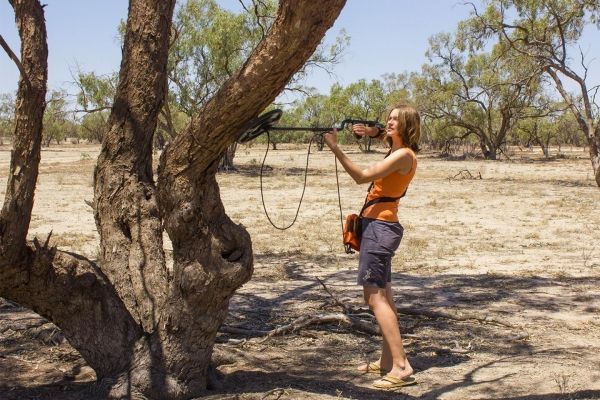Ecologists have no doubt that climate change will affect the earth's animals and plants. But how exactly? This is often hard to predict. There are already indications that some species are shifting their distribution range. But it is much less clear how individual animals and populations are responding to the changes. Scientists at the Helmholtz Centre for Environmental Research in Leipzig, Germany have been studying nocturnal desert geckos to see how they are adapting to climatic changes. The researchers published their encouraging findings in the specialist journal Ecological Monographs. The rise in temperature itself won't cause the creatures any real problems in the near future. And they will be able to compensate for the negative consequences of increasing dryness, to some extent. And this might also be true for other desert reptiles.
The world of reptiles may well include creatures that are more spectacular than the Gehyra variegata, but nevertheless, this small nocturnal gecko has managed to make a couple of fascinating new contributions to the discussion about the ecological consequences of climate change. These geckos are small grey- or brown-skinned lizards that grow to around five centimetres and spend their lives in the deserts of Australia. The hollowed out trunks of eucalyptus trees are their preferred hiding places. After spending the night hunting insects, this is where they seek refuge from the heat in a climate where temperatures can often climb to more than 40 degrees Celsius.
And it is in exactly these deserts where climate scientists expect to see even more extreme conditions in the future. They are forecasted to become even hotter and drier, worldwide. So how will the unique animals and plants that live in these ecosystems cope with these new challenges? This was the question the researchers set out to investigate, using this little gecko as a representative of other nocturnal desert inhabitants.
Read more at Helmholtz Centre for Environmental Research - UFZ
Image: The biologist Annegret Grimm-Seyfarth, searching for a gecko's daytime hiding place in a eucalyptus tree. The radio antenna locates individual creatures that are carrying an RFID tag. (Credit: Jean-Baptiste Mihoub, UFZ)


